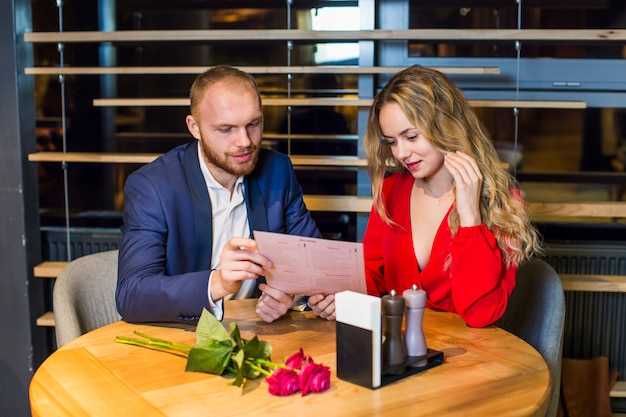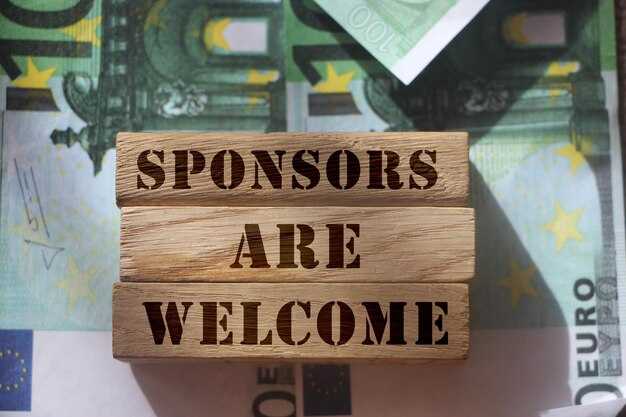While dating, send a compact confirmation 24 hours and again 2 hours before the evening: exact address, arrival window and any parking or transit notes. This reduces the chance someone will be late or worried; once logistics are agreed each person can focus on the exchange instead of logistics and micro-anxieties.
Appearance and practical energy: aim for a fresh look–clean, well-fitting clothes, light grooming and a neutral scent. People are likely to be impressed by neatness and a relaxed posture; choose an outfit that lets you move and work with a natural smile. Avoid outfits that require constant adjustment during a long conversation.
Conversation structure: open with two targeted questions and one observation about the venue to show attention without interrogation. Mirror tone and feelings rather than offering immediate fixes: ask how they feel about a topic, pause to listen, then add a short related anecdote. If someone is already megadating, state availability and boundaries plainly; honesty creates peace and prevents constantly checking motives. Note which topics to avoid on an opening meeting (ex-partners, detailed finances, long medical histories).
Close the evening with a clear signal: if you want another meeting, say so within an hour; if you need time, send a brief message the next morning. Everyone responds better to specific signals than to ambiguity, and this method shortens the follow-up period so interest doesn’t decay or leave you wondering whether it will last long.
Convenience-focused qualities men notice immediately

Wear a presentable outfit and arrive 5 minutes early; that amount of punctuality will signal respect and reduce friction in the first 10–15 minutes of conversation.
If youve been tied up or gone over time, message ahead – showing consideration lets the other person adjust their schedule and keeps you from looking careless. Keep your phone silent and out of sight to avoid interrupting flow and making yourself seem distracted.
Lead with neutral interests: mention music or local arts to get the mood in tune and invite easy exchanges. Small talk tends to land better than heavy topics; save politics and core beliefs for after a few dates to avoid derailing connection.
Hold the door, offer a coat when appropriate, and read body language quickly; letting a girl know she’s comfortable will make her more keen to continue. Maintain a relaxed posture and avoid resume-style monologues about work – state relevant facts about yourself, not a career dossier.
Appearance cues that register fast: neat grooming, minimal scent, and a clear smile. Having a clean, put-together look is often more attractive than an elaborate outfit; mens first glance typically registers appearance and posture in under 7 seconds.
Control practical details: limit alcohol amount to one drink in the first hour, decide what logistics you’ll handle (transport, time), and split incidental costs when appropriate so no one has to deal with awkwardness. After the date, send a short message within 12 hours to confirm interest or closure.
| Quality | Action | Time / Amount |
|---|---|---|
| Presentable appearance | Neat grooming, simple outfit | 5–10 minutes prep |
| Punctuality | Arrive early or message if delayed | 5 minutes early / message if gone over 10 |
| Conversation tone | Bring up music or arts, avoid politics | Light topics first; beliefs after 3+ meetings |
Choose a nearby, familiar venue to reduce travel stress

Pick a venue within a 15-minute drive or a single transit transfer so total travel stays under 20 minutes; reserve a specific table and confirm parking or nearest ride-share pickup to keep arrival logistics simple and predictable.
Prefer locations you or the woman have visited before: familiarity reduces unknowns, lowers anxiety without sacrificing novelty, and allows more genuine, deep conversation because cognitive load is lower. Check noise levels (aim for conversational range under ~65 dB), lighting around 2700K–3000K, and table placement near the entrance to avoid long walks that tax the body or require wardrobe changes.
Bring several contingency options: a second nearby backup venue, an indoor-outdoor choice, and menu screenshots to avoid surprises for dietary restrictions. If one person is a client or paying, clarify payment expectations ahead via brief message to prevent an awkward moment at the end; still offer to split if that feels better for both.
From a psychology standpoint, reducing travel time allows authenticity to surface faster and makes it more compelling to stay engaged – people think more about connection and less about logistics. Sometimes a short commute translates into more time together and a higher chance you’ll both feel comfortable enough to show what you love and be myself while keeping things stylish but not overtly sexy.
Practical checklist: confirm transit/parking, reserve a table near entrance, test noise level online or by phone, plan outfit for body comfort, allow a 30-minute buffer for delays, and have an exit plan if either party wants something else sooner; these steps make the outing feel better and worth repeating.
Offer clear meeting time and a visible landmark to avoid confusion
Set an exact clock time (e.g., 19:15) and name one visible landmark within 30–50 m; send a photo and a map pin immediately after confirming.
- Choose the landmark: pick a cafe entrance, plaza statue, or a store window–avoid shallow markers like small signs; female partners find prominent, well-lit spots easier to spot.
- Confirm the minute: state the precise minute and include a 5–10 minute buffer; given transit variability, have a fallback plan and agree on whether to wait inside or outside.
- Payment clarity: if paying was discussed, say “I’ll be paying” or “let’s split” before arrival; if one partner rejects the offer, move on to deeper topics rather than letting payment stall the evening.
- Decide the exact waiting posture: stand by a bench, the entrance, or the bike rack so both know where to look; this small quality decision reduces scanning and awkwardness.
- Send a compelling message copy: one photo, one short sentence, a live map link and the time stamp – youd avoid multiple messages that confuse the meet-up.
- If plans change today, update the pinned message and send a fresh photo; wiping older messages or sending similar blurred images creates confusion through noise.
- Next-best option: agree on a nearby alternate (e.g., “if not here, meet at the taxi stand 40m east”) and confirm that instruction before leaving your location.
- Use small charm, not filler banter: quick hello lines are fine, but aim for meaningful conversation soon after the arrival to move beyond shallow small talk toward deeper connection.
- Manage the moment: if someone’s more than 15 minutes late, ask whether they want to reschedule; theres no gain in waiting indefinitely–admit inconvenience and propose a better time.
- Impress through clarity: act like a director–stage lighting, noise level and exact spot matter; this one thing increases the chance the meeting will feel deep rather than rushed.
- Practical tips: state expectations (on time, paying, waiting place), confirm with a photo, and check in if you’ve been delayed; clear signals mean fewer awkward silences after arrival.
Pick activities with built-in flexibility for early exit or extension
Choose a low-commitment activity type that fits a 45–75 minute window: coffee, a short museum wing, a park walk or a sunday afternoon farmers market; these options sometimes please both people and reduce pressure if chemistry doesn’t develop.
Set a clear time-ahead plan: announce you’ll have an hour free and agree a simple signal for extension. If something happens or you don’t feel safe, use discreet texting to a friend and a prepared excuse (early meeting, visiting family). Prepare brief scripts for requests and rejects so responses stay polite and fast.
Pick venues that can become more or less involved: a coffee spot that turns into a casual bar at night, a park near restaurants, a museum with nearby cafés. Contrast that with long-ticket events like 2+ hour shows where early exit is awkward. Many female contacts prefer scalable plans that let the same meeting shift without pressure; this keeps a balance between flirt and conversation.
Match activity choice to goals: if one person is looking for light conversation, keep it short; if both are interested in depth, plan a longer follow-up ahead. Keep safety practical: choose public locations, share live location with a friend, and avoid home visiting until trust builds. Check local reviews or источник so the spot’s atmosphere makes an exit or extension worth less awkwardness across your social world.
Dress comfortably while matching the venue’s formality
Match your outfit to the venue: casual coffee or daytime bar – dark slim jeans, plain tee or fitted blouse, clean low-top sneakers or loafers; casual-smart restaurant – chinos or skirt, loafers or low heels (≤2.5 in), unstructured blazer; upscale dinner or theatre – tailored suit or sheath dress, polished leather shoes, a single statement accessory. Break in shoes for at least 2–3 hours in advance and avoid brand-new soles on a long outing.
Prioritize comfort details: choose fabrics with ≥60% natural fibers (cotton/linen/wool blends) to reduce overheating and creasing; bring a lightweight layer for air-conditioned interiors; keep hem lengths and sleeve cuts that allow natural gestures and no tugging. Pack a small emergency kit (band-aid, clear double-sided tape, stain wipe) to keep you on solid ground if something happens.
Let the outfit support conversation and connection: neutral palette plus one accent color draws attention to the face and keeps banter focused on you, not your clothes. A light, unobtrusive scent – one spray behind each ear – engages the senses without overpowering. If a piece wasnt comfortable during a quick trial, swap it; discomfort distracts and makes it harder to begin relaxed interaction, whether the topic is career or weekend plans.
Choose shoes by surface: grass or gravel – avoid stilettos, pick wedges or block heels; cobblestones or long walks – choose supportive flats or clean trainers; standing-room bars – minimal heel and good arch support. For a couple-hour outing plan, test the outfit in your routine at home (walk, sit, stairs) so you know what might need adjusting.
Dress to your personal taste while paying attention to social cues of the occasion. Naturally adapt if the other person’s look is more or less formal – a quick compliment can reset tone and starts light, friendly banter. At goodbye, comfort shows: confident posture, steady footing and an outfit you had no reason to fuss with leave a better lasting opinion than an over-styled look.
Agree on payment and transport plans ahead to prevent awkwardness
State payment and transport expectations before meeting: propose exact amount ranges for food and transit, offer payment options (cash, app, card) and specify who will be paying which portion. If one person already prefers to cover, say so and confirm receipt of the offer so the other can accept or counter.
When deciding between rides, list concrete options: meet near public transport, share a taxi fare, or agree on drop-off address if you plan to drive. Exchange arrival times and a quick note on where the bathroom is at the venue to avoid pauses that create awkward silences during the outing.
Use clear language about intentions: a message that says “I’ll pay for food, you take transport” reduces anxious feelings and prevents misread cues. Psychology studies show explicit logistics lower social stress and make both people feel more comfortable rather than trying to impress by competing over paying.
Handle unexpected changes pragmatically: if plans shift, comment on alternatives (“instead let’s split the bill” or “I can cover the ride”) and confirm who received the update. Small details like hairstyle or a compliment on food are fine later; during logistics stick to facts to avoid mixed signals about love or emotional intentions.
Practical checklist: confirm amount estimate, select payment method, share transport option, state backup plan, and send one short confirmation message – done well, this shows respect, reduces who-does-what anxiety, and leaves space to enjoy the course ahead.


 What Matters to Men on a First Date – Key Qualities & Tips">
What Matters to Men on a First Date – Key Qualities & Tips">

 11 Rare Habits That Keep Men Eternally Attractive to Women">
11 Rare Habits That Keep Men Eternally Attractive to Women">
 How to Talk About Money in Your Relationship – Practical Tips">
How to Talk About Money in Your Relationship – Practical Tips">
 5 Places to Meet Your Future Boyfriend (Not the Bar)">
5 Places to Meet Your Future Boyfriend (Not the Bar)">
 If You Don’t Like Your Partner’s Friends — What to Do">
If You Don’t Like Your Partner’s Friends — What to Do">
 Should You Hire a Matchmaker? Pros, Costs & Expert Tips">
Should You Hire a Matchmaker? Pros, Costs & Expert Tips">
 Free Speech in Relationships – Do You Have the Right to Speak Freely?">
Free Speech in Relationships – Do You Have the Right to Speak Freely?">
 15 Signs Your Long-Distance Relationship Isn’t Working — Warning Signs & What to Do">
15 Signs Your Long-Distance Relationship Isn’t Working — Warning Signs & What to Do">
 9 Benefits of Turning 40 – Good Things That Happen in Life">
9 Benefits of Turning 40 – Good Things That Happen in Life">
 Pros and Cons of Online Dating – Benefits, Risks & Tips">
Pros and Cons of Online Dating – Benefits, Risks & Tips">
 The Secret Life of Marriage – Hidden Truths & Practical Tips">
The Secret Life of Marriage – Hidden Truths & Practical Tips">